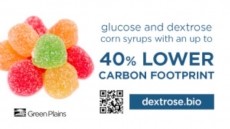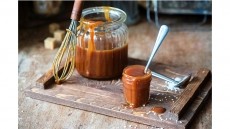Cocoa prices surge on tighter supplies

May cocoa futures on London's LIFFE exchange reached £2,005 (€2138) a tonne, brushing close to the record high prices of $3000 (€2,317) a tonne achieved on the New York Futures in June last year.
While other key inputs for manufacturers have seen some relief in recent weeks - notably oil - the surge in costs for cocoa could see pressure on chocolate makers, once again, to push price rises onto their customers.
Upward pressure on prices
Bullish factors that contributed to this latest price hike include a rise in US cocoa bean processing in the last quarter of 2008 and, essentially, a massive drop in cocoa deliveries - by more than 30 per cent - to Ivory Coast ports between the beginning of October and January 11. December is usually the peak of the harvesting season.
Ivory Coast feeds the majority of the world's cocoa needs, supplying about 37 per cent - between 1.2 to 1.4 million tonnes of beans - of the globe's cocoa use.
Tighter global supplies for cocoa led the International Cocoa Organisation (ICCO) to recently place its global cocoa deficit forecast to 77,000 MT, based on a cut in its 2007-08 global cocoa crop forecast to 3.65 million tonnes.
Risk management
For cocoa, the buyers in the consuming countries are the processors and the chocolate manufacturers. A few multinational companies dominate both processing and chocolate manufacturing. Barry Callebaut is the biggest global manufacturer and distributor of cocoa, followed by US firms' Cargill and Archer Daniels Midland, and Swiss food powerhouse Nestle.
These leading players have been using the commodity exchanges for many years to help manage risk to their volatile raw material supply chains and will hope such financial instruments will help them navigate the prices rises of last week.
The market
Large international food companies such as Nestlé, Mars, Hershey Foods, and Cadburys dominate in the area of widely distributed mass-market branded chocolate.
In terms of the market, boom and bust effects characterise prices in the cocoa cycle, estimated to roll out over a period of 20 years. Prior to the surge in prices last week, prices had undergone a general downward trend from their high in June 2008, closing to just under $2550 (€1969) a tonne at the end of September on the New York (ICE) futures market, and £1495 (€1154) a tonne at LIFFE in London.
And last week's prices rises notwithstanding, as Laurent Pipitone from the International Cocoa Organisation recently pointed out to ConfectioneryNews.com, in the last 30 years, the price trend for cocoa is more downward. In the 1970s, prices flew, in constant terms, five times higher than today. An inflationary phenomenon spread over many commodities at the time.












